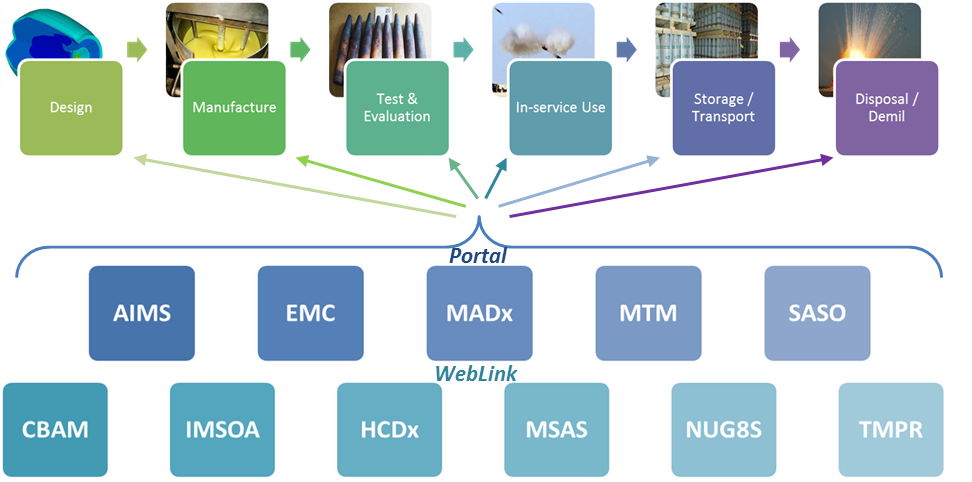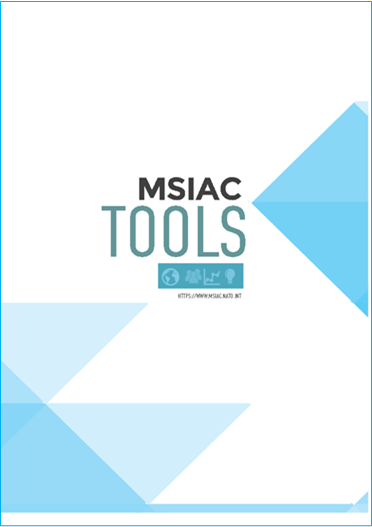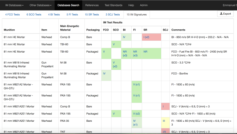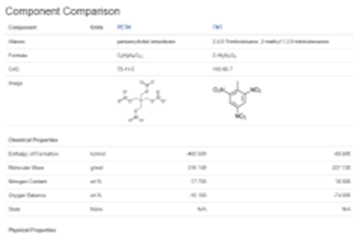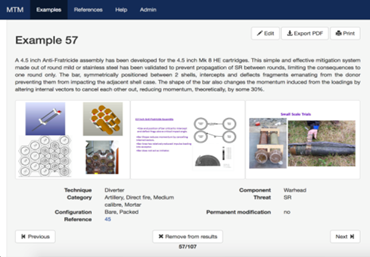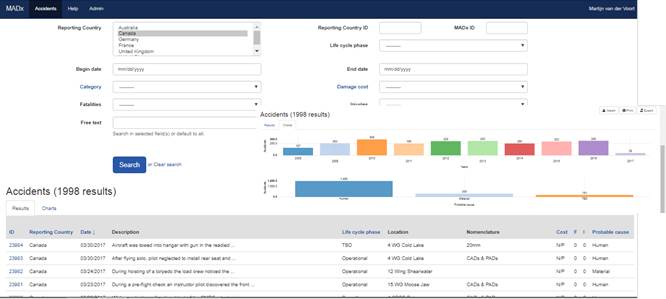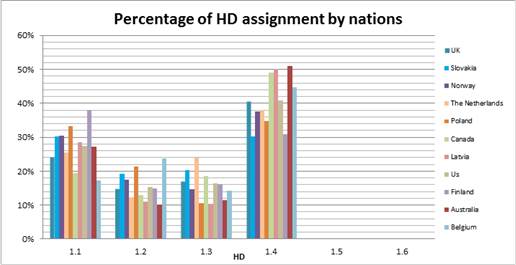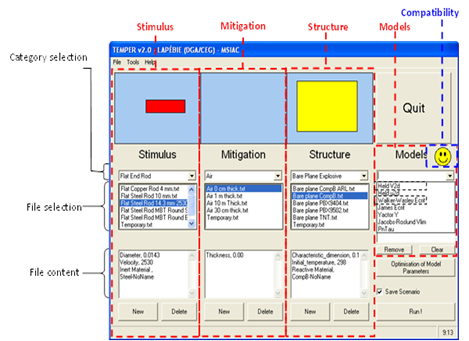MSIAC Tools - Designed to Help you!
Introduction
As an Information and Analysis Center, MSIAC continually pursues approaches to improve our members’ access to the large volumes of information held within our repositories. In some cases direct access to reports, papers and journals is granted but finding specific information can sometimes be seen as looking for that needle in the proverbial haystack.
MSIAC staff has used their knowledge to support you by generating a number of tools for: analyses of specific threats, benefit models, and databases to find information quickly and efficiently.
What are the Tools?
These tools, listed in the graphic below, are fully searchable databases or analytical tools that cover the spectrum of munitions safety and insensitive munitions.
They have been designed to aid anyone working across the field of munitions, from warhead designers to formulators, and from desk officers involved in procurement, safety assessment to those associated with storage & transport. Each tool is placed within the program of work to ensure they are maintained and regularly updated. It also allows, when gaps are identified, for new tools to be developed.
Who can have access to these tools?
Firstly, you must be from a MSIAC member country, which now includes Poland and the Republic of Korea. Access can be granted to those people with a need to know in government, industry and academia. The selection process is controlled by personnel based within each country’s government.
How can I gain access to these tools?
You must complete a simple application form that can be found on the MSIAC website. https://www.msiac.nato.int/contact-access/access-request-form-for-members-of-msiac-nations
The form will be sent to both MSIAC and your country’s National Focal Point Officer, or to the Service Representative (USA only). Once they have confirmed your eligibility you will receive log on credentials. Some tools are restricted to specific, contributing nations and for government only. This process is fast and you could be accessing these tools within days of request.
Where can I find these tools?
The tools are located in a secure part of our system that can be accessed via the MSIAC website. On the main menu, under ‘Secure Website’, you will find two distinct areas: the Portal, and WebLink.
The Portal contains the web based tools, which can be run from any internet enabled device including mobile phones and tablet. To run these tools one only requires local permission to access the internet.
WebLink is a data repository that provides you access to a large number of publications: Open and Limited MSIAC reports, Standards and proceedings from several munitions-related conferences. This is also the location to download our tools that run from your desk top. Some tools will require local permissions to install whilst others rely on Microsoft Office products.
Can I find out more about the tools?
MSIAC has generated an easy reference booklet that contains an overview of each tool. A dedicate fiche explains what the tool does, where to find it, any associated publications, who can have access and the Technical Specialist Officer (TSO) responsible for its maintenance and updates. This booklet is now available electronically here and in paperback from any of the TSO’s. Information on the tools can also be found on the website under ‘Products & Services/Tools’.
Recent Tools News & Updates Advance Insensitive Munitions Search (AIMS)
TSO> Christelle Collet
AIMS provides access to IM test results for munitions and generic test units for each threat defined by the NATO IM policy. The information is displayed in a table that provides all information about the tested items, potential mitigation techniques used, test set-up and test results. The platform also enables users to search through all the databases at once by using a unique and simple interface. Tests performed with the standardized IM threats can also be sorted in a synthesized table that easily allows comparison of the munitions IM signatures. In addition to the constant update with new elements, it will be possible in the near future to easily switch from AIMS to EMC and reversely by the addition of cross-links in energetic fillings.
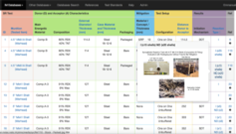
Energetic Materials Compendium (EMC )
TSO> Dr Matthew Andrews
Information on formulations and components are continually added to EMC. Information can be found within the ‘News’ section of the tool. New functions for this version (EMC 5.2) now allow for faster searching and comparison of results. The adaptive table within the formulations database allows for fast viewing of a ‘performance’ or ‘sensitivity’ result. Up to four components or formulations can now be compared in the side-by-side view using the compare function. Export functions to Excel and pdf will be implemented to comparison views for users to add to reports.
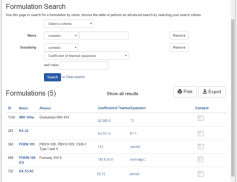
Mitigation Techniques for Munitions (MTM)
TSO> Christelle Collet
MTM provides access to technologies to mitigate the reaction of munitions against IM threats as defined by the NATO IM policy. Munitions manufacturers may use it to design less sensitive munitions and containers (e.g. venting, thermal protection). The military will find storage solutions specifically to avoid sympathetic reaction (e.g. barrier, storage arrangement). A powerful search engine provides a short description of the technologies and its related attributes, including reference(s) (featuring a link to the document(s) in WebLink) and picture(s) when available. The application offers the possibility to select a list of mitigations of interest and then print or create a PDF document. A major update has seen the addition of 34 new examples of mitigation techniques, as well as 49 references.
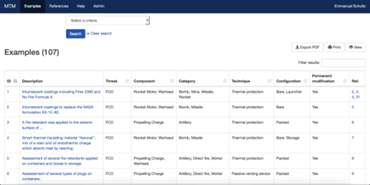
MSIAC Accident Database eXchange (MADx)
TSO> Martijn van der Voort
The MSIAC Accident Database (MADx) allows easy searching in over 12,400 accident reports from US, UK, France, Australia, Canada and Germany. After a year of development and testing, MADx has recently been released to all governmental users from those nations. The database contains information about the date, location, weapon type, life cycle phase, cause, and the number of injuries and fatalities. We invite other nations to contribute to MADx and gain access to the database.
Safety Assessment Software (SASO)
TSO> Martin Pope
Plans are underway to update the infrastructure behind SASO to provide a similar look as the other web-based products.
NIMIC Excel Worksheets on Gap Tests (NEWGATES)
TSO> Dr Ernie Baker
The latest version of the Excel worksheets on GAp TESts, NEWGATES version 1.11 is completed, uploaded onto the MSIAC secure website and is ready for use. NEWGATES contains information related to gap tests. The database has been developed in Excel2003 and runs on a personal computer in the Microsoft Windows environment. It provides the IM community with 6 databases:
- information about 10 gap tests (dimensions, scope, principles);
- pressure calibration curves;
- time calibration curves;
- shock curvature calibration curves;
- 1568 gap test results;
- +250 Hugoniots.
An analytical module is also included to estimate the Hugoniot of a mixture from its composition and the Hugoniot of its ingredients. The unreacted Hugoniot can be used to calculate the threshold initiation pressure seen in the acceptor. Finally, version 1.11 includes the capability to calculated unreacted Hugoniots at different percentages of theoretical maximum densities and a new correlation module between NOL-SSGT, NOL-LSGT and critical diameter of energetics. This new module can be used to estimate critical diameters.
Hazard Classification Database Exchange (HCDx)
TSO> Martijn van der Voort
Fourteen countries share their Hazard Classification assessments through the MSIAC Hazard Classification Database Exchange. HCDx contains information on the articles Hazard Division (HD), Compatibility Group, Sensitivity Group, NEQ, NSN number and packaging information. The data was analysed and compared in a recent trainee program.
Toolbox of Engineering Models for the Prediction of Explosive Reactions (TEMPER)
TSO> Dr Ernie Baker
The latest version of Toolbox of Engineering Models to Predict Explosive Reactions, TEMPER v2.3 has been successfully compiled and uploaded onto the MSIAC secure website and is ready for use. It is essentially identical to TEMPER v2.2.1, except that it will now run on recent versions of Windows and is compatible with recent versions of Excel. TEMPER is a library of models developed by the Gramat Research Centre (Centre d’études de Gramat, or CEG) and the NATO Munitions Safety Information Analysis Centre (MSIAC). TEMPER is available (executable and source code). MSIAC is responsible for making TEMPER available via its secure website, some product support and development, and user group management.
TEMPER is a unique and powerful software package that utilizes a library of empirical or semi-empirical models dedicated to insensitive munitions (IM) assessment. It is an “open source”, Object-Oriented Programming project programmed in Microsoft Visual Basic 6.0 (VB6). Unfortunately, the final release of VB6 was in 1998. On April 8, 2008 Microsoft stopped supporting VB6. As a result, a new application is currently being developed to phase out TEMPER. The new application, named ARM: Analytical Response Models will be web based, but maintain stand-alone capability as well. The initial very basic release of ARM is expected early in 2018. ARM is planned for significant development during 2018 and 2019.

